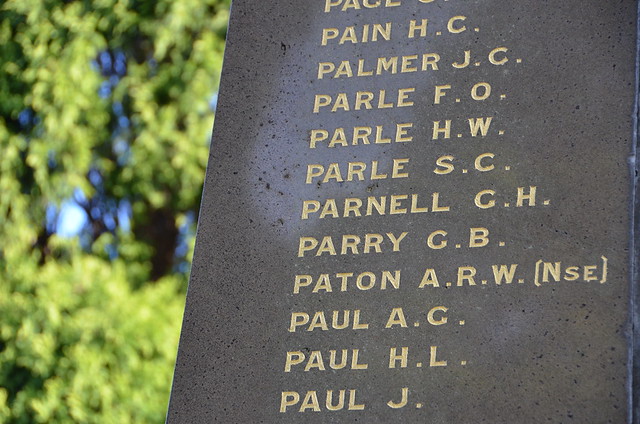Harefield, England. Eight patients from Ward 40, No 1 Australian Auxiliary Hospital, photographed in the grounds of the hospital with Sister Ruby Dickinson. AWM H16039
What did WWI military nurses do?
Dr Kirsty Harris gave us an insight at Mosman Library in September. Her book More Than Bombs and Bandages is a history of their medical practice, and we were fortunate to benefit from her extensive research.
Kirsty has identified 30 nurses with a Mosman connection.
- They served in New Guinea, Egypt, Palestine, Greece, Salonika, India, England, France and Belgium, with Australian, British and Canadian units, on hospital ships, transports and ambulance trains, at casualty clearing stations near the front lines and at base hospitals.
- Their work ranged from something akin to a quartermaster, providing quarters and rations to their units, to administering anesthesia and assisting in operations, sometimes under aerial bombardment and shellfire.
- Sister Henrietta Dillon was a masseuse, an early practitioner of what we’d now call physiotherapy.
- Sister Ruby Dickinson died on active service and is buried at Harefield Parish churchyard in England.
The experience of the Mosman women was representative, said Kirsty, of the nursing service as a whole.

WWI military nurses with a Mosman connection
| Last Name | First Names | Service | Title |
| Andrews | Jessie Mary Busby | AANS | SN |
| Bass | Marie Madeline Goullee | AANS | SN |
| Bowman | May Isabel [called Isabel] | AANS | SN/Sr |
| Bruun | Alice D’Arcy | AANS | SN |
| Callow | Gertrude May | AANS | SN |
| Chapman | Mary | QAIMNSR | SN |
| Chapman | Minnie Logie [actually Jemima] | QAIMNSR | SN/Sr |
| Cockburn | Clarence Kathleen [also just Kathleen] | AANS | SN |
| Davey | Alice | AANS | SN/Sr |
| Dawson | Helen Frances | AANS | SN/Sr |
| Dickinson | Ruby | AANS | SN |
| Dillon | Henrietta | AANS | Masseuse/SN |
| Earl | Ruth Halson | AANS | SN/Sr |
| Farquhar | Anne Georgina Gordon | AANS | SN/Sr |
| Fletcher | Mary Bowden | Red Cross | VAD |
| Gillespie | Clare | AANS | SN |
| Houlgrave | Ellis Mary | AANS | SN |
| Meggy | Margaret Helen [or just Helen] | AANS | SN |
| Morehead | Ada Alice | AANS | SN/Sr |
| Morrice | Nellie Constance | AANS | Sr/Hd Sr |
| Nash | Mary | AANS | Sr |
| Newland | Mary Ethel [known as Ethel] | HS/TF/HS | SN |
| Overell | Doris Sarah Nightingale | AANS | SN |
| Paton | Annie RW | QAIMNSR | Sr |
| Rennie | Edith Harriett | AANS | SN |
| Saunders | Hinemoa Isie Louise | AANS | SN |
| Scanlan | Alice Maud | AANS | SN/Sr |
| Small | Gladys Miranda | AANS | SN/Sr |
| Waugh | Julian Lindsay da Silva | BRC | VAD |
| West | Annie Elizabeth [Major-] | AANS | SN |
Review & further reading
Christine Bramble, whose book Sisters of the valley : First World War nurses from Newcastle and the Hunter Region includes, we found out on the night, the great aunt of our Local Studies Librarian, wrote:
I really enjoyed Kirsty Harris’s talk last Wednesday – well worth the trip from Newcastle. Having done quite a bit of research on the topic of WW1 nurses I had a lot of background beforehand but it is always worthwhile listening to an individual researcher’s perspective and the aspects they choose to focus on. And you always pick up something you didn’t know before – in this case a photo of one of ‘my’ nurses and a relative of another one in the audience. A well-prepared talk of this length for a general audience is a good way of being reminded of the wood as opposed to the trees. It was a great intro to the topic for any newcomers – my two travelling companions both got a lot out of it.
Dr Harris’ book More than bombs and bandages : Australian Army nurses at work in World War I is available for loan at Mosman Library.